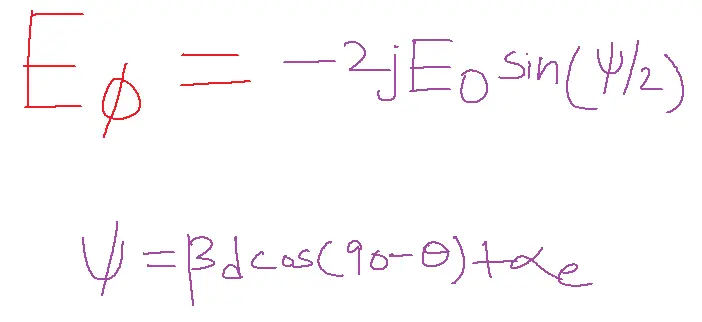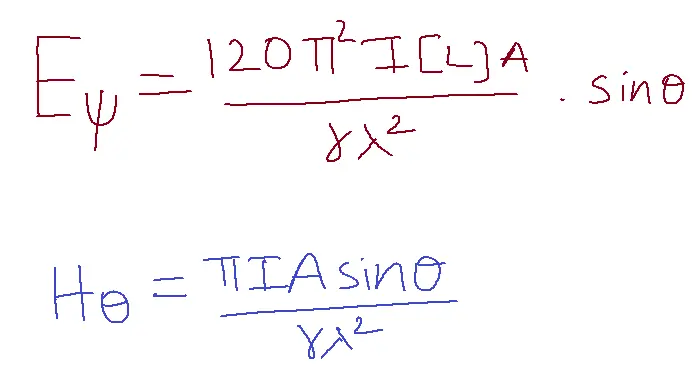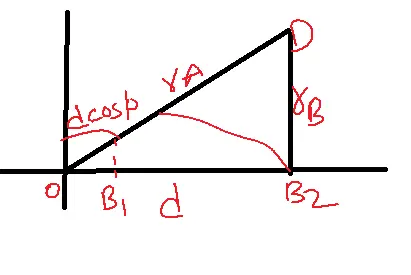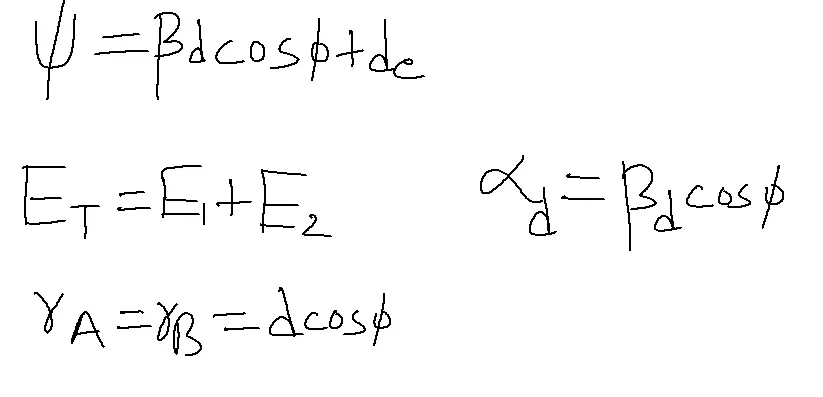- Loop Antenna is used for the direction-finding.
- The loop antenna having more than one loop is known as a frame.
- Whenever the loop antenna is placed perpendicular to the direction of the incoming electromagnetic wave there will not be any induced emf in the coil.
- If Spin the coil by 90 degrees i.e., the incoming electromagnetic signal aligns with the direction of the loop hence it induces a voltage along the axis because of the different phases and is given by E1-E2.
- Therefore, it is evident that the induced EMF reaches its maximum value exclusively when the plane of the loop is aligned with the direction of the incoming waves.
- Due to the consistent radiation pattern observed across various loop shapes with dimensions smaller than the wavelength, the antenna can be effectively modeled as a sharp electric or magnetic dipole.
Loop Antenna Radiation Pattern
To analyze the radiation pattern, we position a small square loop at the origin of a specialized coordinate system. We then measure the field strength at distance p, assuming each element of the loop functions as an individual dipole.
The total electric field strength can be estimated regarding the center given by E =E1+E2

The radiation pattern is given by

Table of Contents
ANTENNA ARRAYS
- The array can be defined as a system of antennas two or more similarly or dissimilarly oriented in linear and non-linear fashion with uniform or non-uniform phase shift excited with equal or unequal amounts of current sources.
- The antenna system in which the elements are spaced equally along the line and excited with equal amplitudes of current sources.
Two or more antennae (Two elements Array):


The array factor is the ratio of total field strength transmitted or received by 2E0.
The array factor (AF)= |ET|/|2E0|
If two antennas are excited with the same amplitude and no phase shift

Pattern Multiplication:
- The principle of pattern multiplication states that the radiation pattern of any antenna array is the product of individual patterns with the array pattern.
- The array pattern is a function of the location of the antenna element and excitation amplitude.
Example:
Sketch a radiation pattern for a two-element array separated by a distance lambda and excited with equal amplitudes of current sources having a phase difference of 0 degrees.
Solution:

Advantages of Loop Antenna
- Directional: Focuses signals, reducing interference.
- Compact: Ideal for small devices.
- Simple: Easy to build, cost-effective.
- Reject unwanted signals.
- Versatile: Works for many frequencies.
Disadvantages of Loop Antenna
- Limited bandwidth: Optimized for specific frequency ranges for targeted performance.
- Low efficiency: Less sensitive than some other antennas.
- Not ideal for long distances: Designed to excel in short-range applications, ensuring robust connectivity in local areas.
- Can pick up noise: Susceptible to local interference.
- More complex for transmitting: Mainly used for receiving.
Applications of Loop Antenna
- AM Radio Reception: Loop antennas are commonly used in AM radios due to their directional properties, which help reduce noise and interference.
- Radio Direction Finding (RDF): Loop antennas can be used to determine the direction of a radio source, which is useful for navigation and tracking.
- Metal Detection: Certain types of loop antennas are used in metal detectors to locate buried or hidden metal objects.
- RFID Systems: Loop antennas are used in Radio Frequency Identification (RFID) systems for reading and writing data to RFID tags.
- Near Field Communication (NFC): NFC devices often use loop antennas for short-range wireless communication, such as contactless payments and data transfer.
FAQs related to the topic
Q1. What is a loop antenna?
- A loop antenna is a simple, closed-loop conductor that acts as a radio antenna. It’s known for its directional properties and compact size.
Q2. How does a loop antenna work?
- Electromagnetic waves are captured by a loop antenna, which converts them into electrical signals.
- Its shape and size determine its frequency range and directionality.
Q3. What are the advantages of loop antennas?
- Loop antennas are compact, directional (reducing interference), easy to build, and inexpensive. They’re great for receiving specific signals.
Q4. What are the disadvantages of loop antennas?
- Loop antennas provide a portable and adaptable solution for various communication needs. Their compact size and directional capabilities make them ideal for mobile and portable applications.
- Although not the most efficient or broadband option compared to some antenna types, their distinct strengths in particular use cases make them indispensable tools for diverse communication needs.
- They can also be susceptible to noise.
Q5. What are the applications of loop antennas?
- Loop antennas are commonly used in AM radios, radio direction finding (RDF), metal detectors, RFID systems, and near-field communication (NFC).
Q6. Can I make a loop antenna myself?
- Absolutely! Loop antennas are relatively simple to construct with basic materials like wire and a frame.
- A wealth of online tutorials and resources are available to assist you every step of the way.
Q7. What is the difference between a small loop antenna and a large loop antenna?
- A small loop antenna has a circumference much smaller than the wavelength it receives, while a large loop antenna has a circumference closer to or larger than the wavelength.
- Small loops are often used for receiving, while large loops can be used for transmitting and receiving.
Q8. How do I tune a loop antenna?
- Loop antennas are typically tuned using a variable capacitor.
- Adjusting the capacitance changes the resonant frequency of the loop, allowing you to receive different frequencies.
Q9. Can I use a loop antenna for transmitting?
- Yes, you can use a loop antenna for transmitting, but larger loops are generally more efficient. Small transmitting loops (STLs) are specialized loop antennae designed for transmitting.
